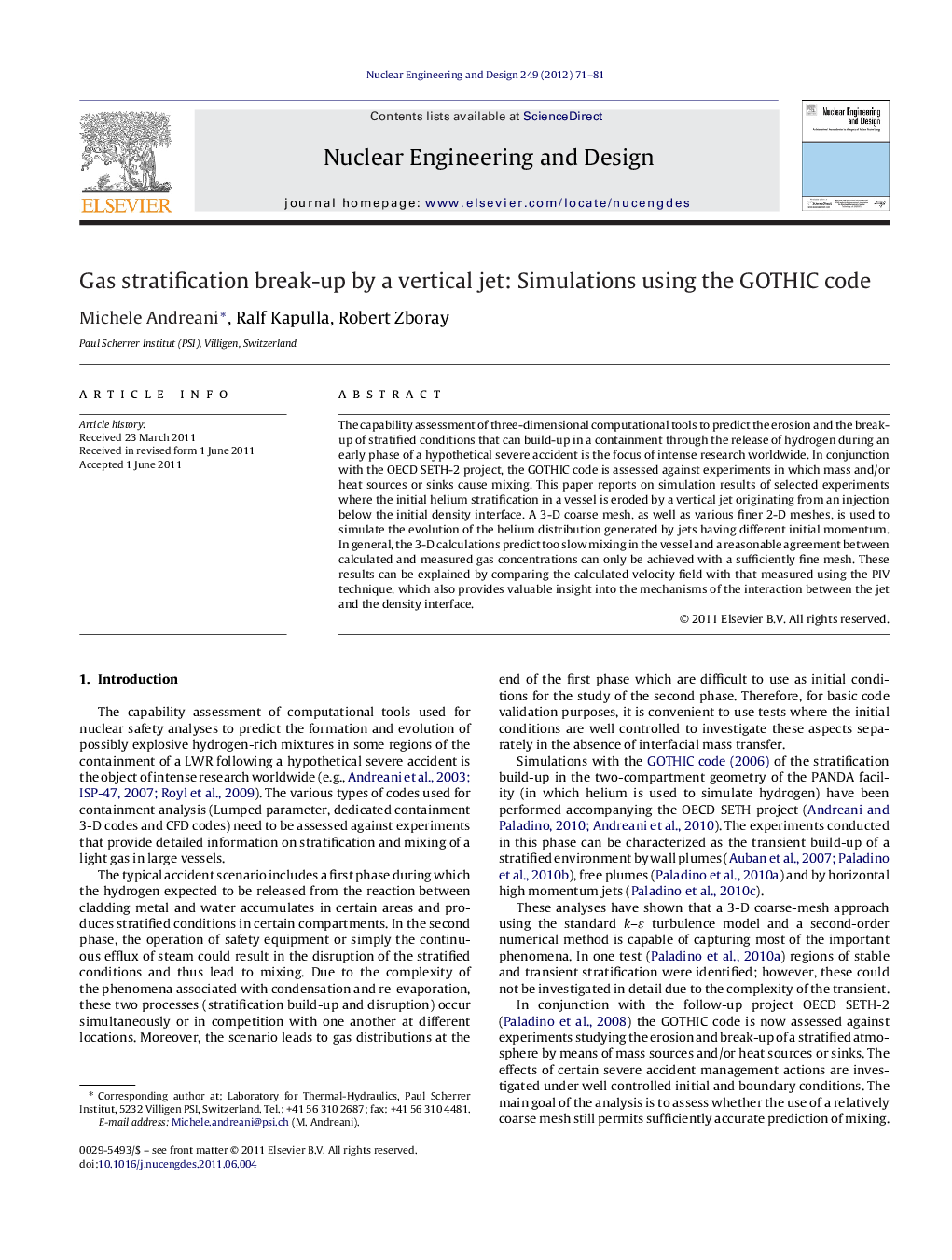| Article ID | Journal | Published Year | Pages | File Type |
|---|---|---|---|---|
| 297164 | Nuclear Engineering and Design | 2012 | 11 Pages |
The capability assessment of three-dimensional computational tools to predict the erosion and the break-up of stratified conditions that can build-up in a containment through the release of hydrogen during an early phase of a hypothetical severe accident is the focus of intense research worldwide. In conjunction with the OECD SETH-2 project, the GOTHIC code is assessed against experiments in which mass and/or heat sources or sinks cause mixing. This paper reports on simulation results of selected experiments where the initial helium stratification in a vessel is eroded by a vertical jet originating from an injection below the initial density interface. A 3-D coarse mesh, as well as various finer 2-D meshes, is used to simulate the evolution of the helium distribution generated by jets having different initial momentum. In general, the 3-D calculations predict too slow mixing in the vessel and a reasonable agreement between calculated and measured gas concentrations can only be achieved with a sufficiently fine mesh. These results can be explained by comparing the calculated velocity field with that measured using the PIV technique, which also provides valuable insight into the mechanisms of the interaction between the jet and the density interface.
► Simulations of experiments addressing helium stratification break-up with GOTHIC are presented. ► In the tests, the initial helium-rich layer in a large vessel is eroded by a vertical jet. ► A 3-D coarse mesh and various finer 2-D meshes have been used for the simulations. ► In general, the 3-D calculations predict too slow mixing in the vessel. ► A reasonable agreement between calculated and measured gas concentrations requires a fine mesh.
